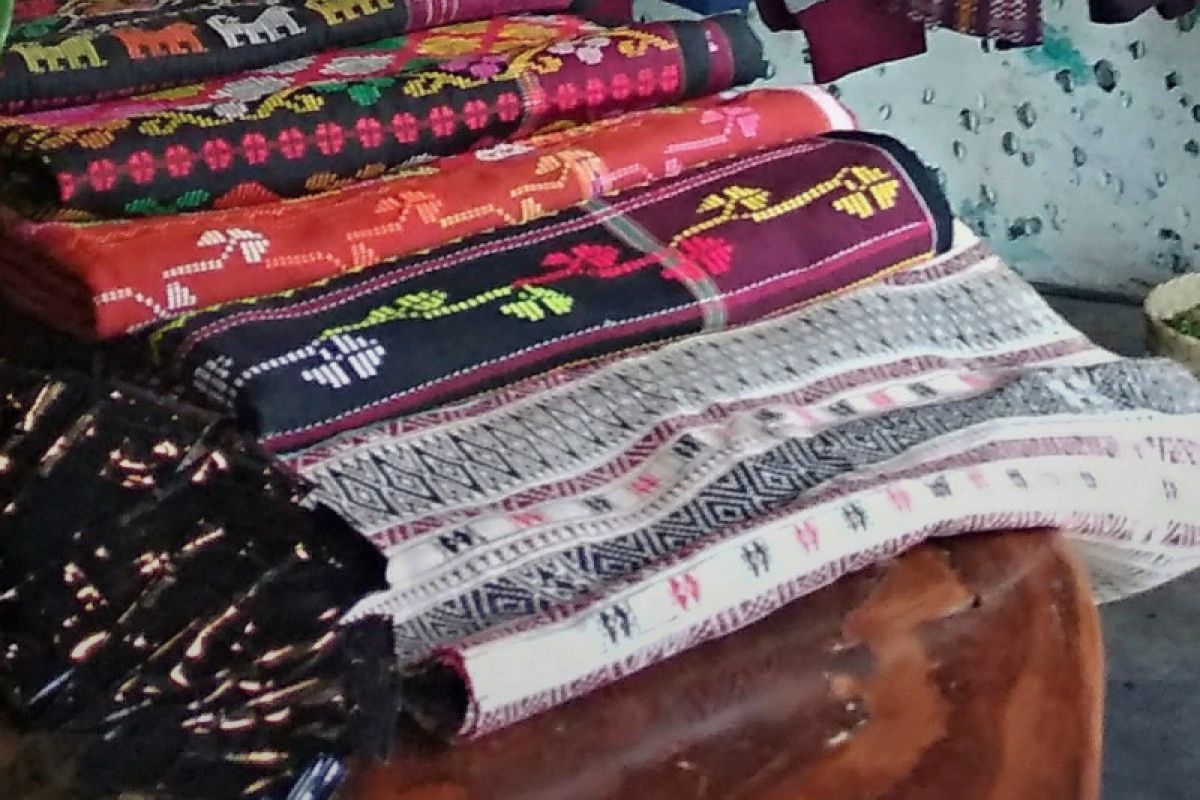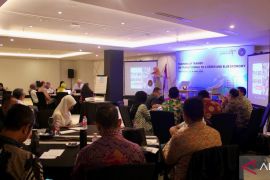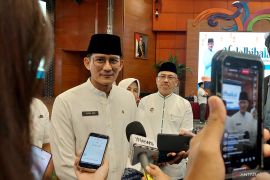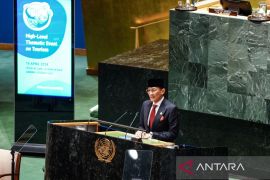And the traditional Batak textiles originating from North Sumatra, known as ulos, are not an exception.
Ulos is considered to be one of the best Indonesian traditional garments preserved from generation to generation by the people of the Batak tribe in North Sumatra.
Historically, the Batak ancestors who lived in mountainous areas wore ulos to keep themselves warm.
For most Batak people in the past, the heat from the sun was not quite enough to dispel the cold mountain air. Thus, ulos became a source of warmth for the Batak tribe, apart from sunlight and fire.
As time went by, the story of ulos also continued to develop as did its importance for the people.
The fabric has over time become not just something to keep people warm, but also a source of livelihood and economy for the local community. It is also through ulos that people now hope to achieve better welfare.
Therefore, in the ‘Proud of Made in Indonesian Products’ movement launched by the government, ulos has found a place among products of excellence, which are promoted as creative or artisanal attractions.
In addition, the preservation of ulos is in line with the super-priority tourism destinations development program that aims to support the creative economy sector, including ulos craftsmen.
Training
Ulos holds great cultural significance for the Batak people who have taken great care to preserve their customs through the ages, according to chairman of the business management division of the National Craft Council, Suzana Teten Masduki.
And among Indonesians, ulos is considered a work of art that needs to be preserved, she added.
According to Masduki, ulos is a symbol of the kinship philosophy that advocates not only protecting oneself, but also others, especially those who are very close to us.
The spirit of kinship symbolized by ulos would resonate with the society; and, it is also relevant to the current pandemic situation, when people are being urged to take care of each other by observing physical distancing, using masks, and maintaining hygiene, she pointed out.
Considering the importance of ulos, the National Craft Council has specifically designed programs to help micro, small and medium enterprises (MSMEs) engaged in the craft to survive during the pandemic, she said.
The first program covers training related to entrepreneurship, procuring government goods and services, formulating a general business plan, understanding the marketplace, bank products and services, as well as creative economy.
The training has been held in a number of regions in the country, and carried out in full compliance with the health protocols to curb coronavirus infections, Masduki informed.
Meanwhile, the second program initiated by the council is ‘Cerita Wastra’, which is a photo and narrative competition on Indonesian traditional garments, organized via Instagram.
The competition on the social media platform attracted more than 1,600 entries from all over Indonesia, who competed for a cash prize of Rp20.5 million.
Story competition
In order to continue the promotion of ulos, the National Craft Council is ready to provide a series of trainings on entrepreneurship and advice on strengthening MSME business management.
Such training has been held with the aim of improving the quality of MSMEs to support the five super-priority tourism destinations development program, including in the ulos-producing area in Lake Toba, North Sumatra.
In addition to training, the government has also held a story competition that even featured documentary films telling the stories of ulos craftsmen looking to eke a living by preserving their tradition.
At the launch of the ‘Lake Toba Creative Buy Campaign’, President Joko Widodo specifically mentioned ulos fabric as the most superior product from North Sumatra, in addition to Sidikalang coffee, which is already very famous.
Those two excellent products from North Sumatra, according to the President, are even popular among international customers.
Widodo also admired the beautiful area of Toba with its stretch of volcanic lakes, and its combination of tourism and creative economy that deserve to be replicated throughout the archipelago.
In the future, it is hoped that it will be able to nurture the Indonesian economy through digital Indonesia, he remarked.
While launching the campaign, President Widodo said he was very proud as it would be complemented with education and assistance for creative actors and MSMEs to really advance in the digital industry, not just onboarding in the marketplace.
Indeed, it is time for Indonesian tourism to rise and grow hand in hand with the creative economy sector. (INE)
Related news: Ngarai Sianok-Maninjau suggested for inclusion into UNESCO GGp list
Related news: Jokowi, Merkel to jointly open Hannover Messe 2021 Digital Edition
EDITED BY INE
Editor: Fardah Assegaf
Copyright © ANTARA 2021












